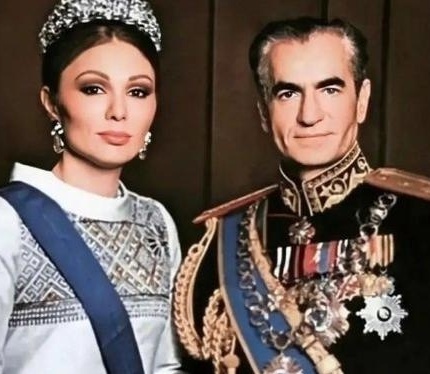SAEDNEWS: Farah Pahlavi’s crown is a piece worn exclusively by her. This crown is considered part of Iran’s national jewels and is currently preserved and displayed at the National Jewelry Museum in Tehran.

According to the History and Culture Service of Saed News, kings primarily used their main crowns during coronation ceremonies. Due to the extreme weight of these crowns, wearing them on ordinary days was impractical, and they were sometimes reserved for special occasions. Among the most notable Iranian crowns are the Pahlavi Crown, the Kiani Crown, and the crown and half-crowns of Farah Pahlavi. Each of these crowns is adorned with highly valuable gemstones and was used exclusively during important ceremonies. In the past, these crowns were kept at the Central Bank, and their use required approval from several officials. Once authorized, the crowns were transported under strict security measures to the designated palace. Today, these crowns and other royal jewels are preserved at the National Jewels Museum of Iran.

As part of the so-called White Revolution, which included policies granting greater freedoms to Iranian women, Mohammad Reza Pahlavi decided on 26 October 1967 (4 Aban 1346 in the Iranian calendar) to crown his wife during his own coronation, symbolizing this movement. Prior to this, none of the wives of Iranian kings had ever been crowned. Therefore, a special crown was needed for this historic day.

The task was assigned to French jewelers from Van Cleef & Arpels. To create the crown, they had to use gems and jewels from the royal treasury. Since taking royal jewels out of Iran was prohibited, the company sent a team of jewelers to Iran. The entire process of crafting the crown took approximately six months.
The Farah Diba Crown was created by the French jewelry and watch company Van Cleef & Arpels, founded in 1896. The company had previously designed jewelry for Elizabeth Taylor, among other prominent figures. After extensive consultations, the crown was ultimately crafted using white gold, a green velvet cap, and other precious gemstones.

Gemstones used: 36 emeralds, 36 rubies, 1,469 diamonds, a central 150-carat hexagonal emerald, 2 spinels (or red spinels) totaling about 83 carats, and 105 pearls (the largest measuring approximately 22 mm in length).
Material: White gold base with a green velvet cap.
Historical era: Pahlavi II
Weight: Approximately 2 kilograms
Manufacturer: Van Cleef & Arpels, France
Current location: National Jewels Museum of Iran

Recently, claims emerged that Mohammad Reza Pahlavi and Farah Diba had taken the crowns out of the country at the start of the revolution. One week after these claims, Iran’s Minister of Cultural Heritage, Ezzatollah Zarghami, confirmed with photographs that both crowns remain securely housed at the National Jewels Museum.


